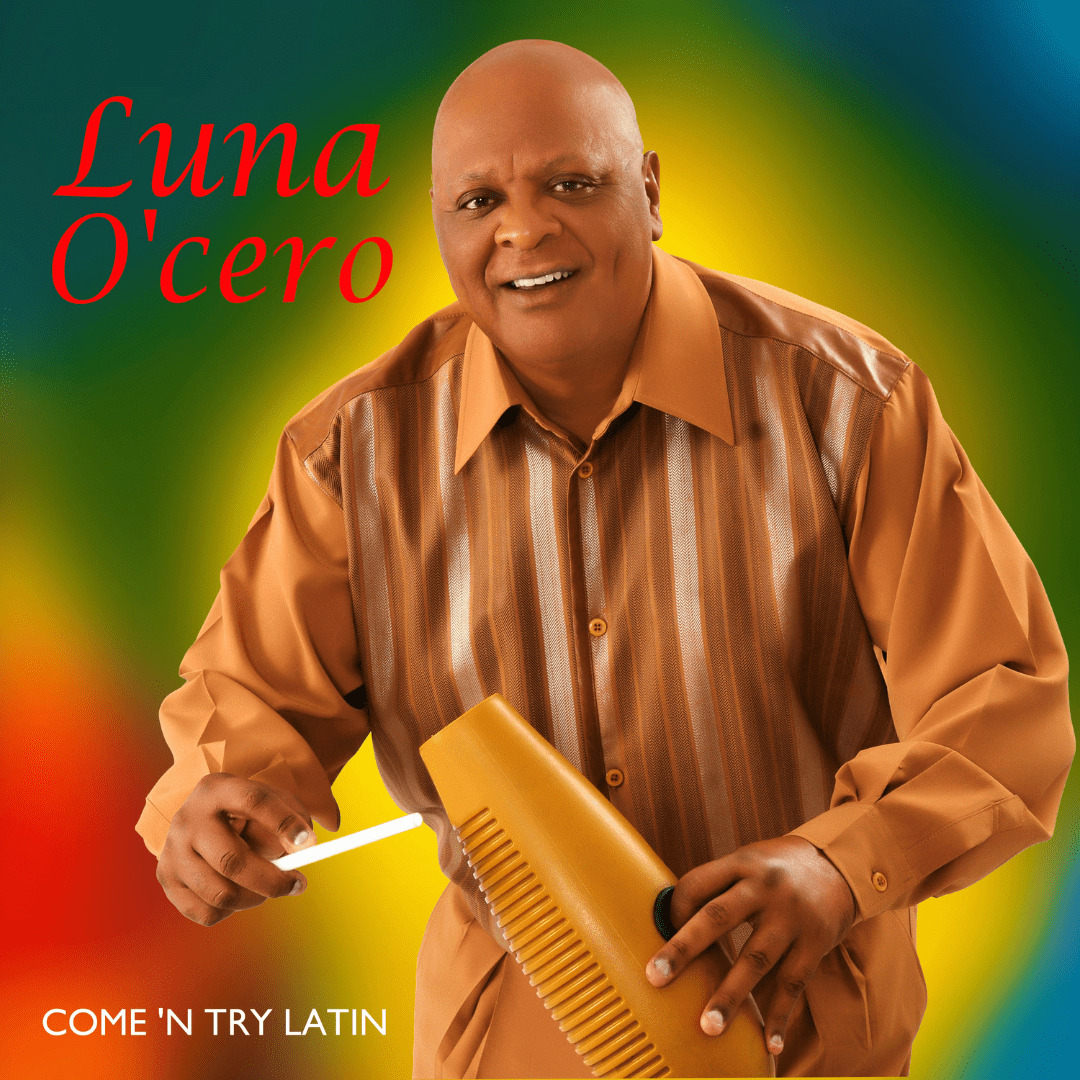Luna O’cero’s latest album, Come n’ Try Latin, impresses with its seamless fusion of diverse musical genres such as Salsa, Merengue, Son, and Bolero. In our exclusive interview, the talented Caribbean singer reveals his determination to transcend genre boundaries, dedicating himself to mastering multiple styles. Influenced by esteemed artists like Johnny Ventura and Joseito Mateo, he embraces their inspiration and joins forces with renowned producer Armando Olivero to create a record that not only honors traditional compositions but also injects a vibrant and groundbreaking Latin essence.
With Come n’ Try Latin, Luna hopes to share the infectious spirit of Latin music with listeners worldwide, inviting audiences to experience the wealth of traditions and rhythms it offers. In a delightful turn of events, he discloses that the Spanish versions of “Mona Lisa” and “Quando, Quando, Quando,” which were recently released, have been gaining airtime on Dominican Republic radio stations. This exciting development has paved the way for his upcoming live performances scheduled in June 2023.
Continue to read the full interview below.
Come n’ Try Latin sets itself apart through its fusion of Salsa, Merengue, Son, and Bolero. Could you elaborate on how you integrate different components to create a distinctive sound that truly embodies your personal style?
Nowadays, many groups or artists dedicate their careers to just one genre. They are known as “Merengueros”, Salseros,” and so on. Not too many swing among genres. At the beginning, I was told that I was better at Salsa, but instead of staying on just that genre, I worked hard to get better at Merengue. Mainly, by listening closer to singers like Johnny Ventura and Joseito Mateo. Like presidents that fight hard not to be a one-termer, I didn’t want to be a one-genre artist.
The Latin music industry is known for its vibrant and diverse culture. How do you ensure that you pay tribute to the traditional compositions while still pushing the boundaries of your imagination and creating something fresh and innovative?
I had the opportunity to work with, internationally known arranger, director, producer, Armando Olivero in this album. He managed to maintain the basics of the original arrangements on each of the songs, and then added that Latin “thing”. This fact is very noticeable on “Sweet Dreams Are Made of This,” particularly.
Your rendition of Santana’s “Black Magic Woman” was well-received by the audience. How do you approach reinventing classic songs while maintaining their essence?
“Black Magic Woman” was my first venture in English. I presented my idea of a new chorus for the song to arranger Armando Olivero, and he fused the basics of the original arrangement, the melody of the song and added the melody of the chorus to a new creation. The song was released as a single in Nov. 2019. We did not include it in the album because it’s been out for almost four years, and it’s been doing well on its own.
The legacies of iconic artists such as Nat King Cole, Joseito Mateo, and Johnny Ventura have significantly influenced your musical journey. How do you infuse their profound impact into your own work?
Nat King Cole released an album in Spanish, in the 60’s that was very popular in Latin America and Spain. In that album, like in mine, all the songs were covers. His, of very well known “Boleros” of the era. That album was among the favorites in most households. I was a child in the Dominican Republic, then. Joseito Mateo and Johnny Ventura are both icons, whose influence reaches any artist that ventures in the genre of Merengue. I had the opportunity to see them perform on many occasions, live concerts and Television.
Being an artist deeply rooted in your musical heritage, how do you aim to spread the joy of Latin music globally and introduce it to audiences who may be unfamiliar with its rich traditions and rhythms?
The true intention behind Come ‘n Try Latin was to bring Merengue to new borders, to cultures that are unfamiliar with the genre. Since English is the language most widely spoken, it had to be one of the bridges. When people hear the term “Latin Music” they immediately think of “Salsa.” It is played, danced, and listened to in all Latin Countries from the Caribbean out. It has been in movies, and movies have been made about it. So I used “Salsa” as another bridge.
Your academic background in Liberal Arts and Computer Programming seems quite diverse from your musical pursuits. How have these distinct areas influenced your approach to music, and how do you effectively integrate the knowledge you have acquired into your creative process?
My major in college was Science (Biology) and the intention was to go into Dentistry upon graduation. But, because of the length of that career, I chose a shorter one. Computer programming seemed attractive. I was a young man, then. Working on a future. In those times, I took some piano lessons and then guitar, retaining just the basics of each.
Are there any upcoming shows or performances that you would like to share with your fans?
I have released the Spanish versions of “Mona Lisa” and “Quando, Quando, Quando” as singles. “Mona Lisa” keeps the same name. The other, changes to: “Cuando, Cuando, Cuando.” These two versions are doing quite well on the radio in The Dominican Republic. To the point that “Luna O’cero” is now considered an acclaimed artist there. And we are working on the agreements for a few shows there, beginning by the end of June of 2023.
Listen to the full album here:


